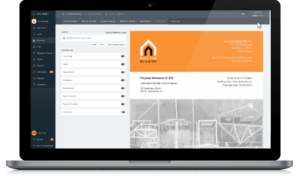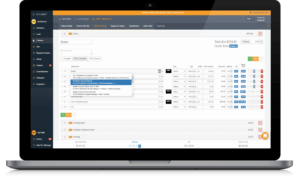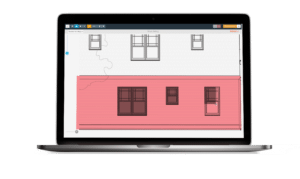The importance of a construction budget
Building a successful home construction business requires accurate and repeatable processes that ensure your team’s performance stays predictable and reliable.
It’s only when you successfully deliver home projects of various size and scope that you build a reputation for delivering on time and on budget. This kind of valuable reputation paves the way not only for new business but repeat business from existing, happy customers.
Of course, having a steady flow of construction projects is only the beginning of what it takes to grow your business.
Success flows from the amount of work and the value that work provides your business. Work must contribute to profits or you’re just wasting time and resources.
Many construction businesses fail because they don’t keep this in mind and forget to consider not only the actual cost of a construction project but also the markup and profit margins necessary to keep them out of the red. They do not create a proper construction budget that makes their financial plan clear.
How estimates and budgets work together
Because a proper construction budget is so important, let’s discuss how to build a fundamental process that links accurate estimating and budgeting together.
The most efficient way to build a repeatable construction budgeting process is to create budget templates based on your most successful projects. After all, your projects, past and present, are uniquely yours and provide the experience that competitors can’t duplicate.
What to include in your residential construction budget template
When you budget from past jobs, you ensure everything is covered and you don’t repeat past budgeting mistakes. A comprehensive construction budget template should include the type of tasks that occur again and again no matter the project’s scope. Main tasks like these include:
- Permits and approvals
- Equipment rental
- Demolition, site prep
- Excavation
- Concrete and foundation
- Framing
- Roofing
- Flooring
- Doors and windows
- HVAC, plumbing and electrical
- Painting
- Appliances
As you can see this is just a general list but underscores the level of detail a construction budget should contain to cover all project expenses from beginning to end.
No doubt there are many more tasks and subtasks you would include. The point is to capture all the critical steps so that you don’t have to remember them every time you want to bid a new project. Starting a construction budget from scratch or from memory wastes time.
How does a template benefit your business
A construction budget template ensures you track costs, indirect and direct, and should be based on the highly accurate estimate and bid that you send to the customer. If done right, that bid includes a project estimate that gives the best price for you and the client. Clear estimates build trust and close more deals.
Because estimates take so much time to create, they should do more than just win a project. They need to help you manage that project from beginning to end. The estimate should serve as the foundation for your construction budget. You don’t want to double-handle the same numbers over and over again. That wastes time and leaves you open to blunders when keeping track of all the specific tasks.
Avoiding the double-handling of data is hard to do when you use paper and pencil to estimate and to budget. For many builders, creating budget templates this way, hammering out figures on tables and charts, feels comfortable. Still others, over the years, have turned to popular spreadsheet software, like Google sheets, to speed adding up all the numbers.
But in today’s fast-moving economy of fluctuating material prices and higher interest rates, there are serious drawbacks to these traditional approaches to home construction budgeting.
Transforming construction project budgets with construction management software
Let’s take a look at some of the more common problems with spreadsheets as identified by others who study business processes and efficiency. No doubt you’ll find some of these familiar.
Spreadsheets are not connected – the data within each does not easily flow together, forcing you to create connections by jumping back-and-forth into different files to pull together a big picture of your project costs.
Spreadsheets introduce human error – the more you and your team use spreadsheets, the more likely user errors will crop up in the different formulas hidden behind each cell. How will you know when a figure has been mistakenly calculated? What happens when you pass that bad data from one spreadsheet to another?
Spreadsheets are not scalable – the more you grow, the more you need admin tools specifically designed for your business. The last thing you need is to be chained to your desk constantly fiddling with spreadsheets and figuring how to share them with your team. Who has time for that?
Competitive builders are increasingly turning to home construction management software to create online templates for both estimating and budgeting.
Because this software is designed specifically for home construction, builders find that software speeds up the entire process of planning and managing a construction project. And because it’s a cloud-based platform, all phases of a construction project can be managed from anywhere there is an internet connection.
How Buildxact benefits your residential construction project
Let’s take a look at how Buildxact speeds the creation of an estimate and construction budget.
With Buildxact, you can create an estimate from a template in multiple ways:
Create your own
Use a Buildxact premade template
Import an Excel spreadsheet with a prior estimate
Use an existing estimate from an existing Buildxact job.
We have a small sample here to quickly illustrate a few points.
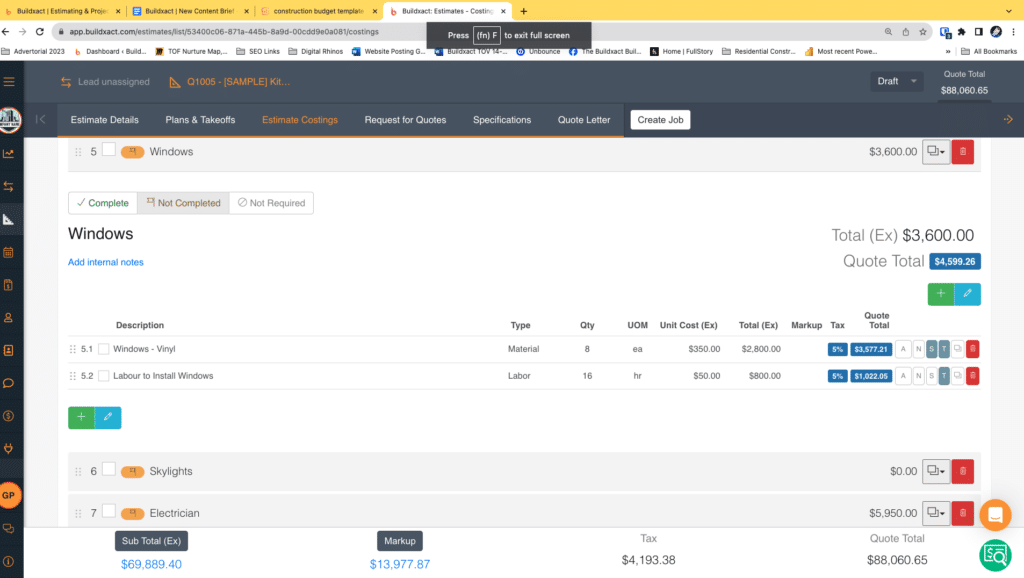
Here, we have a task for a window installation that includes line items for materials and labor. The line items allow you to define the cost based on counts you calculated using a digital takeoff tool that comes included with Buildxact. You also can include markup and local tax rates. Buildxact has all the details for you in one place, and Buildxact lets you decide how much of this detail shows up in the final customer bid.
You can save this entire task as an assembly to reuse in other estimates you create, or you can use the entire estimate as a template for your next job. You choose how much or how little you automate your estimating.
Now, let’s illustrate the point made about connecting estimating to construction budgeting:
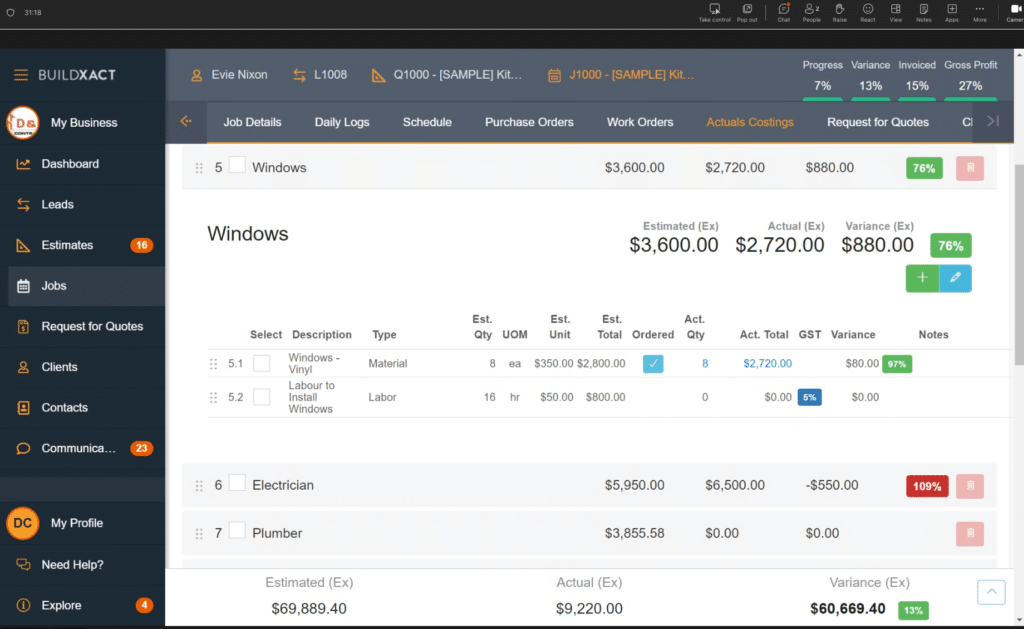
Here you can see that Buildxact’s actual costings report shows the same line items that were in the estimate. The same $3,600 task now has actual costs applied against that estimated budget and shows with color-coded tiles whether the task is under or above budget. In this example, the window task is in the green on budget at 76% spent, but the Electrician tasks below it are over budget as indicated by the 109% red tile.
All of this information is displayed for the user as the user records purchase orders within Buildxact. There is no need to create manual budget reports by double-handling data.
Try Buildxact today!
This is just an introduction to the power of Buildxact budget reporting. Ready to learn more? Schedule a demo today with a Buildxact team member, or if you are ready to jump In and try it, sign up for a free trial today!





